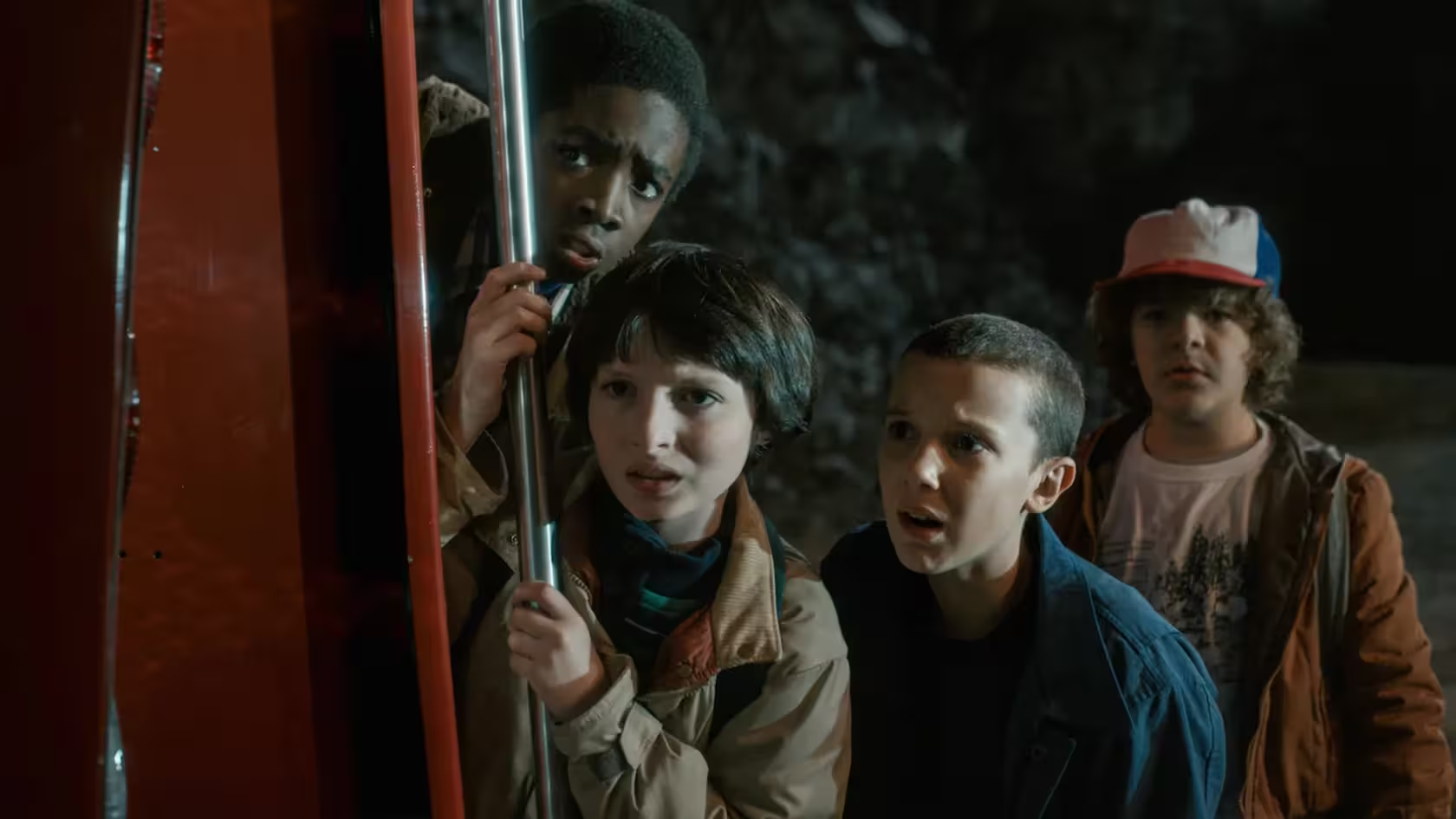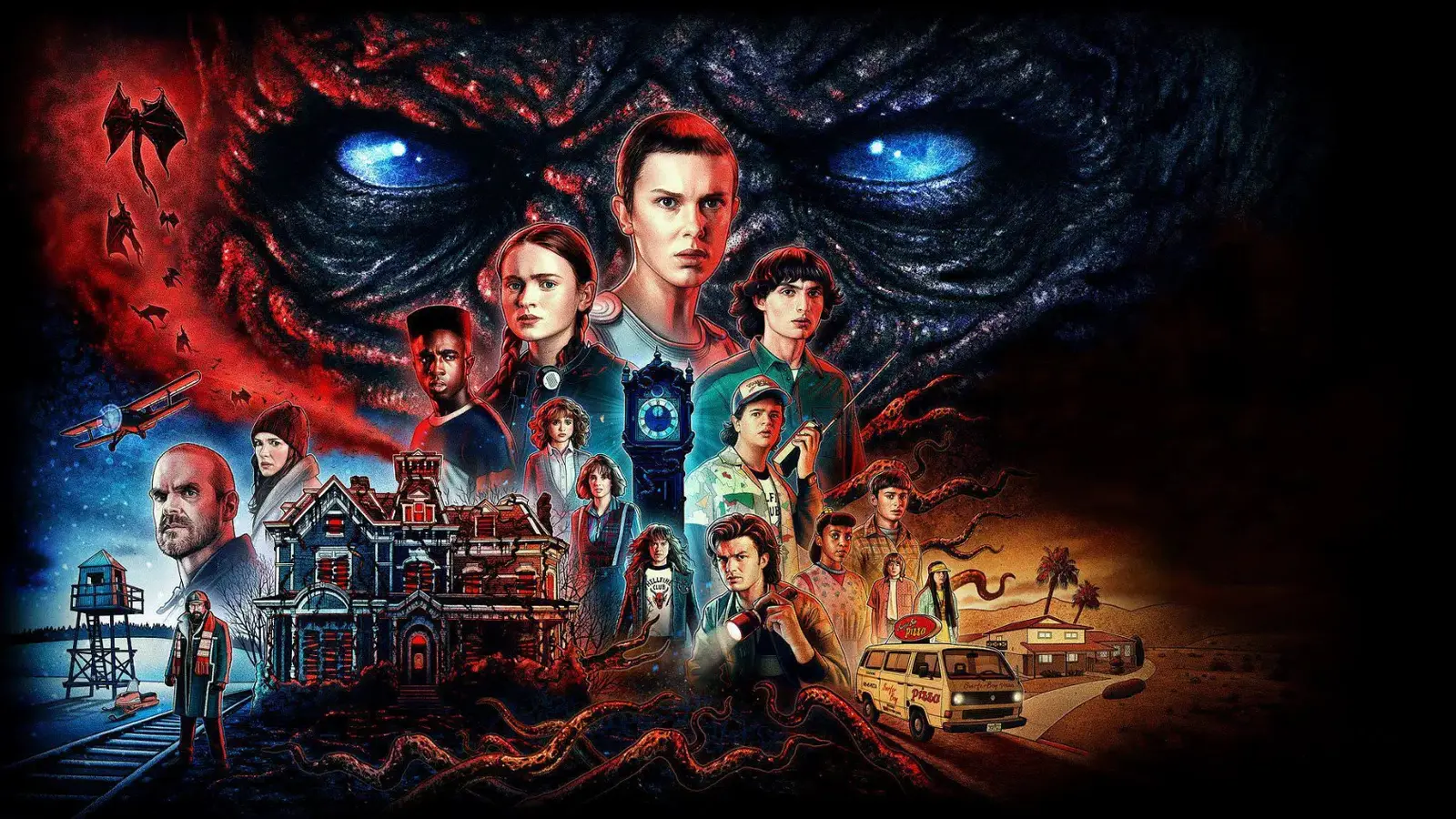5 Minutes
Stranger Things mania pushes older seasons back into Netflix’s spotlight
As the countdown to the final chapter begins, Stranger Things has achieved an unusual streaming milestone: all four previous seasons have simultaneously re-entered Netflix’s global Top 10. The surge in viewership arrived even before the first four episodes of Stranger Things 5 premiered on November 26, 2025, proving the franchise’s enduring cultural pull.
Between November 17 and 23, Netflix reported season 1 drawing roughly 4.1 million views, landing it at No. 3 among English-language shows that week. Season 4 followed at No. 5 with about 3.3 million views, while seasons 2 and 3 both logged near 3.1 million views, slotted at No. 7 and No. 9 respectively. Those numbers put every season of the Duffer Brothers’ series alongside other big titles in Netflix’s weekly rankings — a feat no other show on the platform has managed to date.
Why now? The power of nostalgia, event TV, and a smart release strategy
This resurgence isn’t accidental. The long gap since season 4 and the heavily promoted rollout for season 5 have turned the release into an event. Netflix split the final eight episodes into three parts — four episodes released at once, three more on Christmas Day, and a single finale on New Year’s Eve — creating multiple appointment-viewing moments. That strategy encourages re-watches and discovery by new viewers, boosting catalog demand across the board.

Beyond tactics, Stranger Things continues to tap into broader trends: nostalgia for the 1980s, ensemble-driven storytelling, and high-production genre TV that blends horror, adventure, and teen melodrama. Season 4’s massive footprint remains a reminder: it still ranks as the third most-viewed English-language season in Netflix history, accumulating 140.7 million views in its first 91 days after release in 2022.
From streaming to box office — a first for Netflix originals?
One of the more intriguing aspects of season 5’s rollout is its hybrid release plan. Netflix has scheduled the finale to debut simultaneously on the service and in cinemas on New Year’s Eve, making Stranger Things 5 the first Netflix series widely expected to also generate meaningful box-office revenue. The move nods to a growing industry practice of turning prestige streaming finales into theatrical events — a strategy that elevates cultural cachet and opens ancillary revenue streams.
This theatrical push sets Stranger Things apart from peers like The Last of Us or Wednesday, both massive streaming hits but primarily confined to the small screen. Netflix’s gamble reflects confidence in the brand: a franchise that has consistently driven subscriptions and social-media buzz can justify the cinematic experiment.
Context and comparisons
Look around the streaming landscape and you’ll see similar behaviors: older seasons often spike before major premieres (The Crown, The Witcher), yet it’s rare for all prior seasons to chart simultaneously in the Top 10. Stranger Things’ cross-generational cast and serialized lore — along with a vocal global fanbase — magnify that effect. Comparatively, season 4’s theatrical-length episodes and bold tonal shifts already positioned the series closer to cinematic spectacle than many other Netflix originals.
Film critic Elena Moreno notes, “Stranger Things has become more than a series; it’s a cultural telescoping of childhood memory and blockbuster scale. Releasing the finale in theaters confirms the show’s evolution from streaming phenomenon to shared pop-cultural event.”

Fan reaction, trivia, and what to watch for
Fans have been combing forums for clues about the finale, rewatching earlier seasons to catch details and revive emotional beats — a community ritual that amplifies streaming metrics. Trivia worth noting: the Duffer Brothers originally conceived Stranger Things as a contained mystery; it expanded organically into a sprawling mythos across five seasons. Production secrecy around season 5 has only stoked anticipation, while Netflix’s metrics-driven marketing targeted both long-time fans and curious newcomers.
Expect the viewership spike to ripple through Netflix’s charts again after each release date: the November launch, the Christmas drop, and the New Year’s theatrical-streaming finale. Whether the final season will smash existing records remains to be seen, but the franchise has already rewritten part of Netflix history by putting every preceding season back in the Top 10.
"Stranger Things has always been adept at turning scarcity into spectacle," adds cinema historian Marko Jensen. "This staggered release and theatrical finale are savvy moves to extend the conversation and monetize a cultural moment — it’s event television reimagined for the streaming age."
For viewers, the final run promises both emotional closure and blockbuster stakes. For the industry, it’s a case study in how to turn a streaming saga into a global event with measurable commercial consequences.

Comments
Marius
Is Netflix just gaming the charts though? That theatrical finale smells like a cash grab... will fans actually pay extra?
atomwave
wow this is insane, all seasons back in Top 10? Stranger Things really became a juggernaut. Rewatch time, might cry lol


Leave a Comment